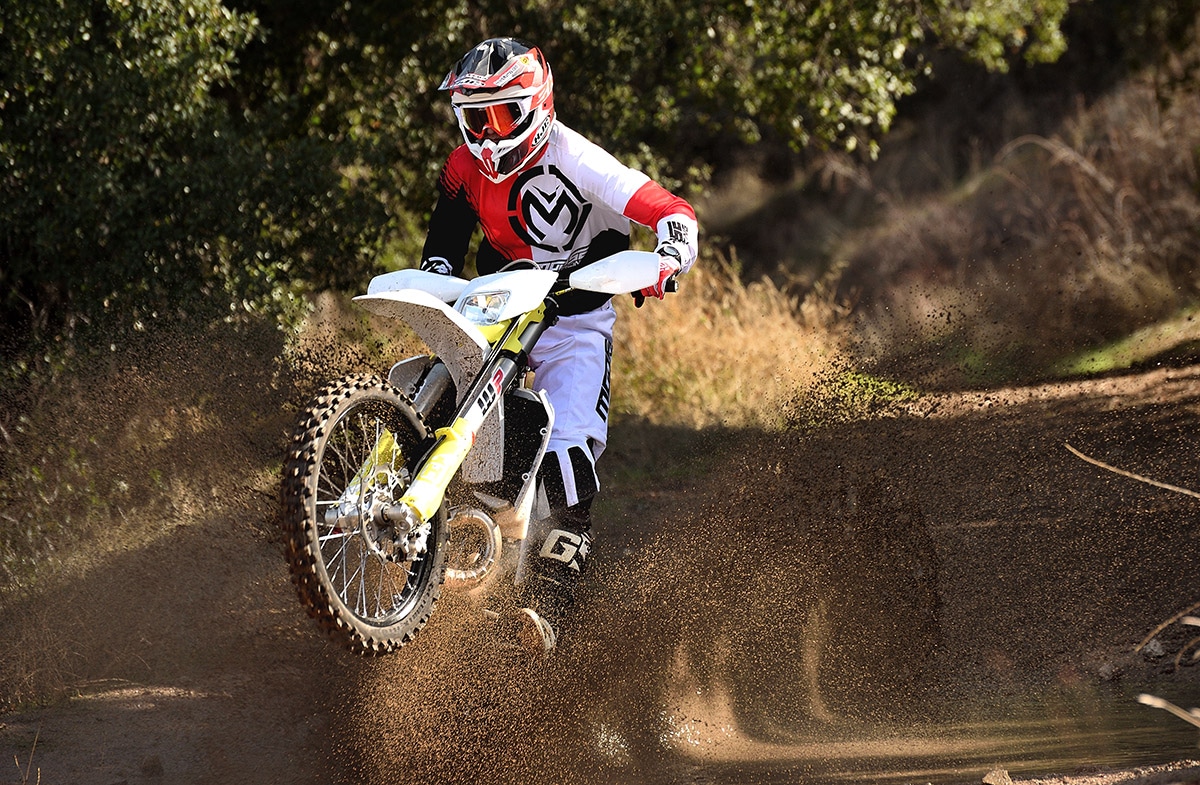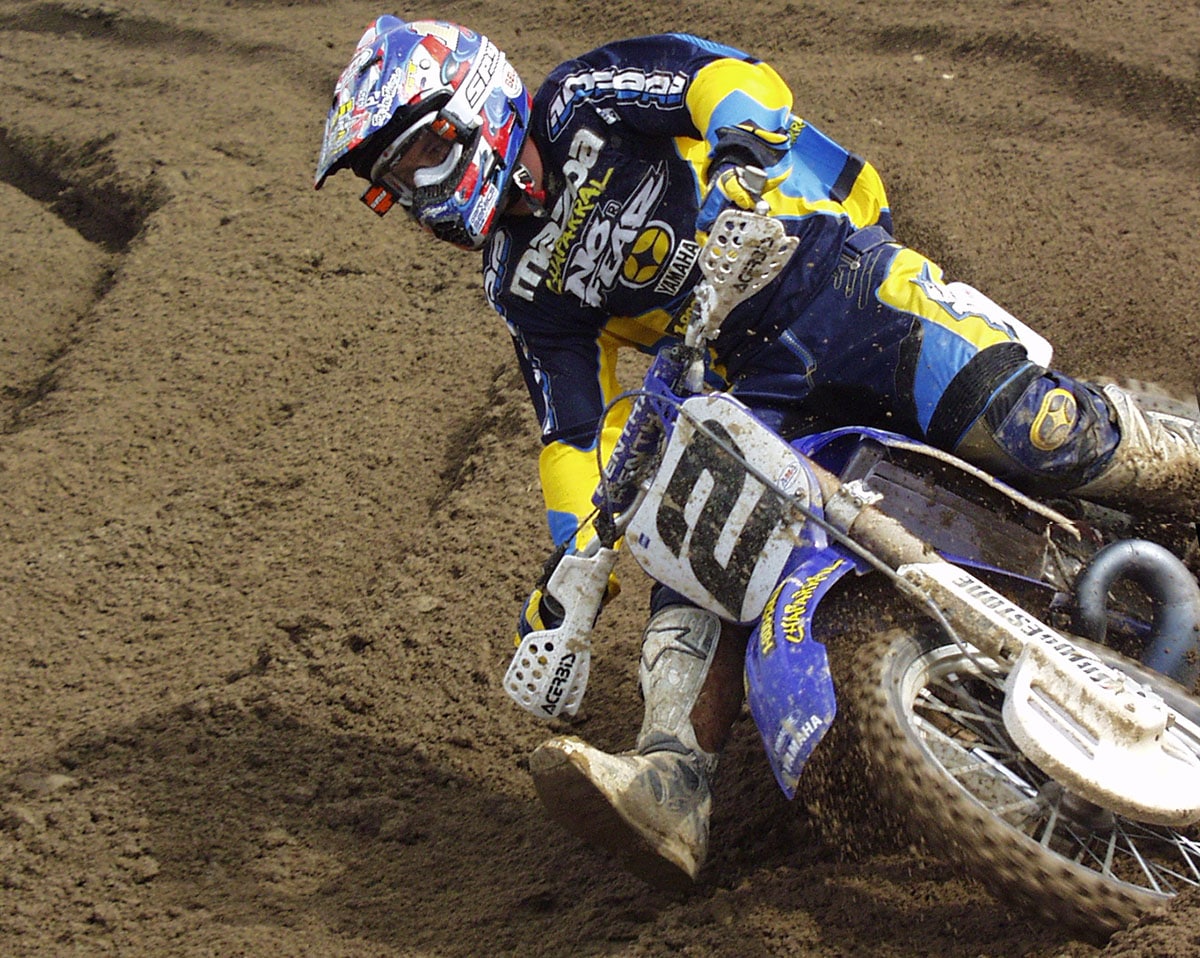There are very few haters when it comes to the KTM and Husky 300 TPI two-strokes. Everyone loves them. The 300cc two-stroke is universally accepted as a nearly perfect platform for an off-road bike, and the Husky/KTM Transfer Port Injection technology is hard to knock anymore, even for old-school two-stroke purists. But which one? There are two KTMs (the 300XC and 300XC-W), and two Huskys (the TX300 and the TE300). Aside from the headlights, are there any real differences?
We happen to have a Husky TX300i and a Husky TE300i, and we’ve ridden them back to back a number of times–always keeping proper social distance. They are similar, but there are some important differences. The TE is supposed to be more trail oriented, which is why it has a headlight, taillight and an odometer. This year, it got a new frame and bodywork, straight from the motocross models. The more competition-oriented TX got that stuff last year, but it was carbureted in 2019. Now it has TPI fuel-injection just like the TE, making the two models more similar than ever.
When we first got the two bikes, we drained the fuel tanks (both 2.24 gallons) and weighed them both. There’s a surprising difference. The TE was 235 pounds and the TX was 223. Could a headlight weigh that much? As it turns out, much of the weight is in the suspension. The TE has the WP Xplor coil-spring fork, The TX has the Xact air fork. The shocks have different specs, but are the same model. Other differences are hard to find. The two bikes have the same part numbers for their cylinders, heads, pistons and throttle bodies. They have different part numbers for first and second gears, though, and the TX has a rear sprocket that’s 1 tooth larger (51 vs 50). The chains are different, but both are O-ring.

When you ride them back to back, the suspension is what you notice first. The TE is much softer. Keep in mind that the TX has an air fork, though, so it can have any spring rate you please. The rear isn’t as flexible, so you really shouldn’t go too far off the reservation or you wind up way out of balance. Bottom line: the TE is much cushier, and from our past history with the TE’s Xplor fork, it’s best to leave it that way. It’s a great fork for trail riding, but not so good if you try to modify it for competition. Overall, we prefer the air fork.

The power delivery is quite different, too. You would never think that the two bikes have the same top ends. All the power-making hard parts are identical, so the designers managed to tailor the power deliveries of the two bikes with nothing more than mapping. The TX is much more crisp down low, and it seems to make more power in the middle and top. We couldn’t really prove this with any field test, though. We did hill climbs, drag races and roll-ons without any conclusive results. In real-world acceleration, the two bikes are very close. The difference is simply one of feel and throttle response. Both bikes have a map switch, and both were better in map one most of the time. Only in very slippery conditions would you want to go to the milder map one.
The prices are the same. Both sell for $10,099. In the end, the bikes are so close we would say that it all comes down to supply and availability. If your dealer has more TEs on the floor, maybe he’s willing to deal. For what it’s worth, though, if any of our guys were forced to make a call, all of them say they prefer the TX. Look for more in the July, 2020 print edition of Dirt Bike.
DIGITAL DIRT BIKE
We can’t offer a cure for Covid 19, but we definitely have a treatment for the quarantine. We’re offering an extensive digital library of Dirt Bike Magazine back issues for free. We normally charge for this, and, to be honest, we will again in the future. Click on the image above to get it while its free.
ROLF TIBBLIN
Kenneth Olausson puts together a monthly blog that features Husqvarna history.l It is, after all, the oldest motorcycle manufacturer in the world, and there are a lot of good stories to tell. This month he’s looking back at the European MC Championship of the ’50, where Rolf Tibblin make history. You can read the Good Old Times Blog here.
THE BELL CLAN
Before our unplanned spring break, Zach Bell was riding like the wind in virtually all forms of western off-road racing. He suffered a couple of untimely DNFs, otherwise he might well have been leading in both WORCS and NGPC. This week in Kawasaki’s Proof In Racing digital PR magazine, there’s a cool feature on Zach’s Precision Concept/Chaparral Kawasaki team. Bob and Robby Bell (who aren’t related to Zach as far as we know) have been running the team for years and they are one of our favorite racing families. You can check out Proof In Racing here.
OLD PHOTO DEPARTMENT

Without any new racing, I’ve been having fun looking at old action. The oldest stuff I have on my computer is from the Glen Helen National in 2000. That was the first year that I shot with a digital camera, so all the earlier stuff is in slides, stacked up at the Dirt Bike Office. The camera was the Olympus C2500, which was the first consumer digital camera that you could conceive using for race action. I loved it at the time, but it was pretty primitive. Scott Cox had one as well, and we used to share various cheats that got us through those dark early days without film.


Stay healthy. We’ll get through this soon.
–Ron Lawson









Comments are closed.